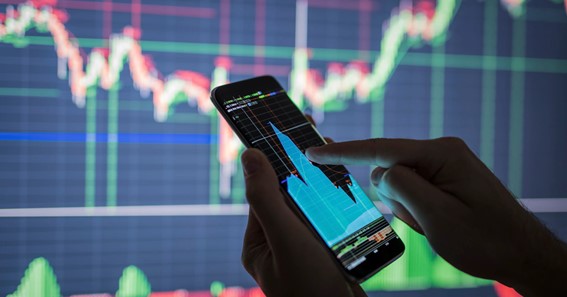When you carry out leveraged trading, you borrow money from your broker. You open a position using some money from your account and some money from your broker. You have to pay back your broker after the trade, so this type of trading is risky and not recommended for inexperienced traders.
Why is Leveraged Trading Popular?
Risking a larger amount of money means bigger – possible – rewards. (But also bigger – possible – losses.)
Traders use leverage to gain exposure to a larger position.
Example: You take $100 of your own money and borrow $900 from your broker to open a $1,000 position.
Leverage becomes especially important for traders who wish to gain from small price movements, a very common technique among day traders. If you open up a big position, even a small price movement in the right direction will signify a lot of money.
click here – 5 Beginner Tips For Buying Gold And Silver Bullion
How Much Can I Borrow?
That depends on two factors:
- How much the broker is willing to lend you? If you want to trade using high leverage, then you need to open an account with a high-leverage broker.
- If there are any limits set by applicable law. (The European Union has, for instance, capped leverage for non-professional traders.)
Leverage is often written as a ratio, e.g. 1:10 or 1:200. It can also be written as a multiple, e.g. 10x or 200x.
If the leverage is 100x, you only have to use $100 of your own to open a position for $10,000.
How much leverage the broker is willing to offer you for a certain trade will typically depend on several factors, including the asset type (or even particular asset) you wish to trade.
If a broker is advertising “1:500 leverage”, it rarely means that they will approve 1:500 for all kinds of trades.
Using 1:15 Leverage: an Example
- You have $100 and want to buy shares when the share price is $15. With your own capital, you could only afford 6 shares (6 x $15 = $90).
- You decide to borrow money from your broker, i.e. use leverage.
- You put in $100 and borrow $1,400. You now have $1,500 to risk and buy 100 shares at $15 per share.
- The share price goes up, and when it is at $20, you sell. 100 shares x $20 = $2,000.
- You pay back $1,400 to your broker and now have $600. That is your initial $100 + a $500 profit. With only $100 of your own money, you managed to make a $500 profit – not bad!
- What would have happened without leverage?
- You only have $100, so you can only buy six shares (6 x $15 = $90).
- The share price goes up, and when it is at $20, you sell. 6 shares x $20 = $120.
- $120 is your original investment of $100 + a $20 profit. Since you did not use leverage, you only gained $20.
click here – 5 Tips to Save Money Living in Dubai
Markets for Leveraged Trading
There are brokers available online that offer leverage for a wide range of financial instruments, including shares, stock options, commodity instruments, exchange-traded funds (ETFs), and index speculation instruments. Leverage is extensively used by forex traders and Contracts for Difference (CFD) traders. In recent years, leveraged cryptocurrency trading and speculation have also become popular.
Regulation
In parts of the world, regulation is in place to limit how much leverage a trader can use. Typically, this regulation was enacted to protect ordinary consumers from taking on too much leverage during retail trading and does not pertain to professional traders, institutional investors, and so on.
Within the European Union, the leverage limits pertain to non-professional traders. If you are a professional retail trader and would like to be classified as a professional trader with your broker, contact the broker´s customer support to find out more about the requirements and see if you qualify.
The European Union leverage caps for non-professional traders depend on asset type. The highest limit is 1:30 (for asset types deemed fairly non-volatile), and the lowest being 1:2 (for cryptocurrencies).
Negative Balance Protection
Many brokers that offer leverage also give their traders negative balance protection to reduce the risk of a client ending up in debt.
While this might sound great, it is important that you read the terms and conditions before you start trading because negative balance protection typically comes with strings attached. For starters, it may give the broker the right to close your open positions automatically if the price drops below a certain point. This is a two-edged sword: it will safeguard you from losing even more, but it will also force-close the position in a situation where you might have strongly prefered to ride out the bumps and wait for the upward movement.
